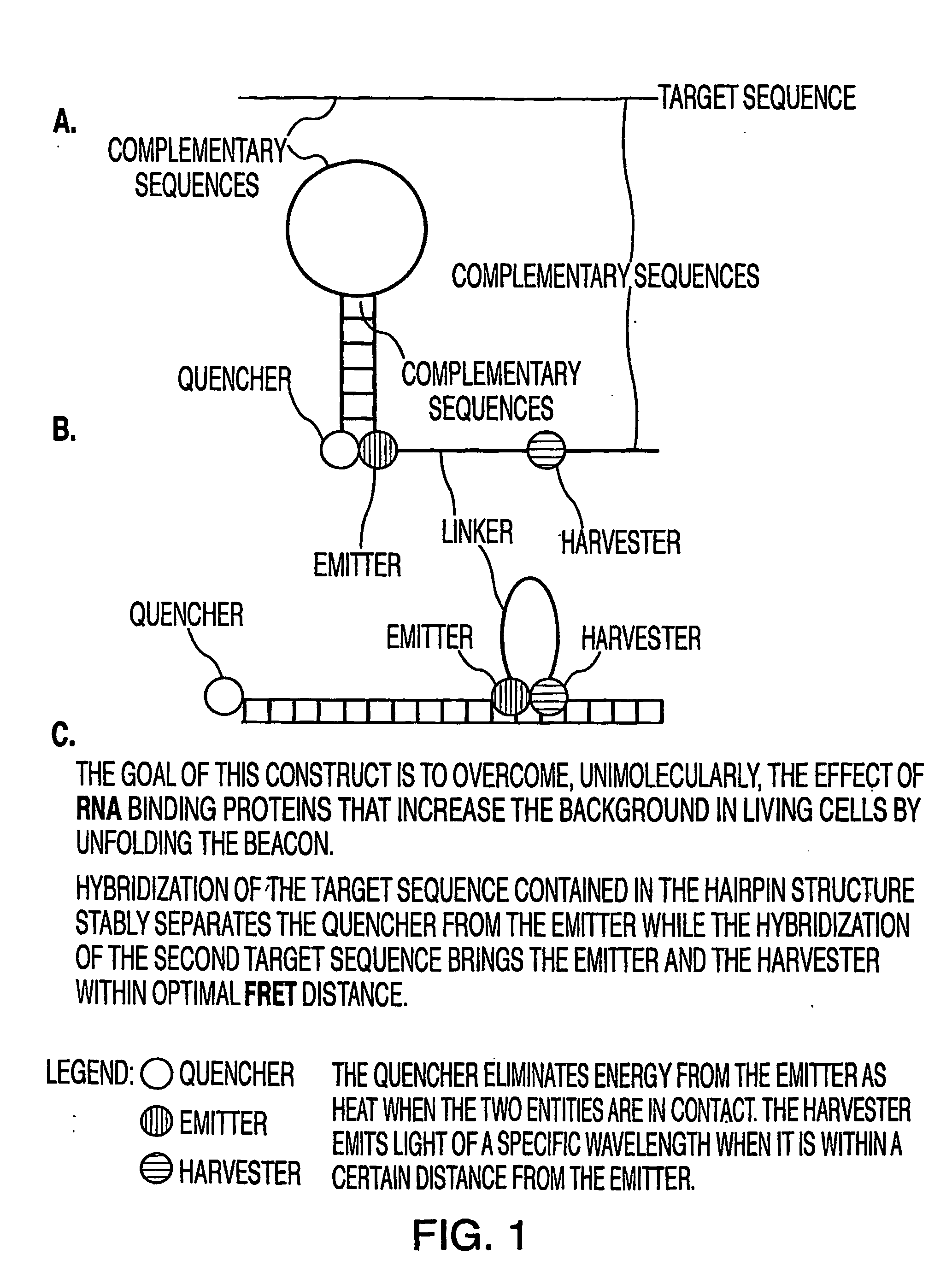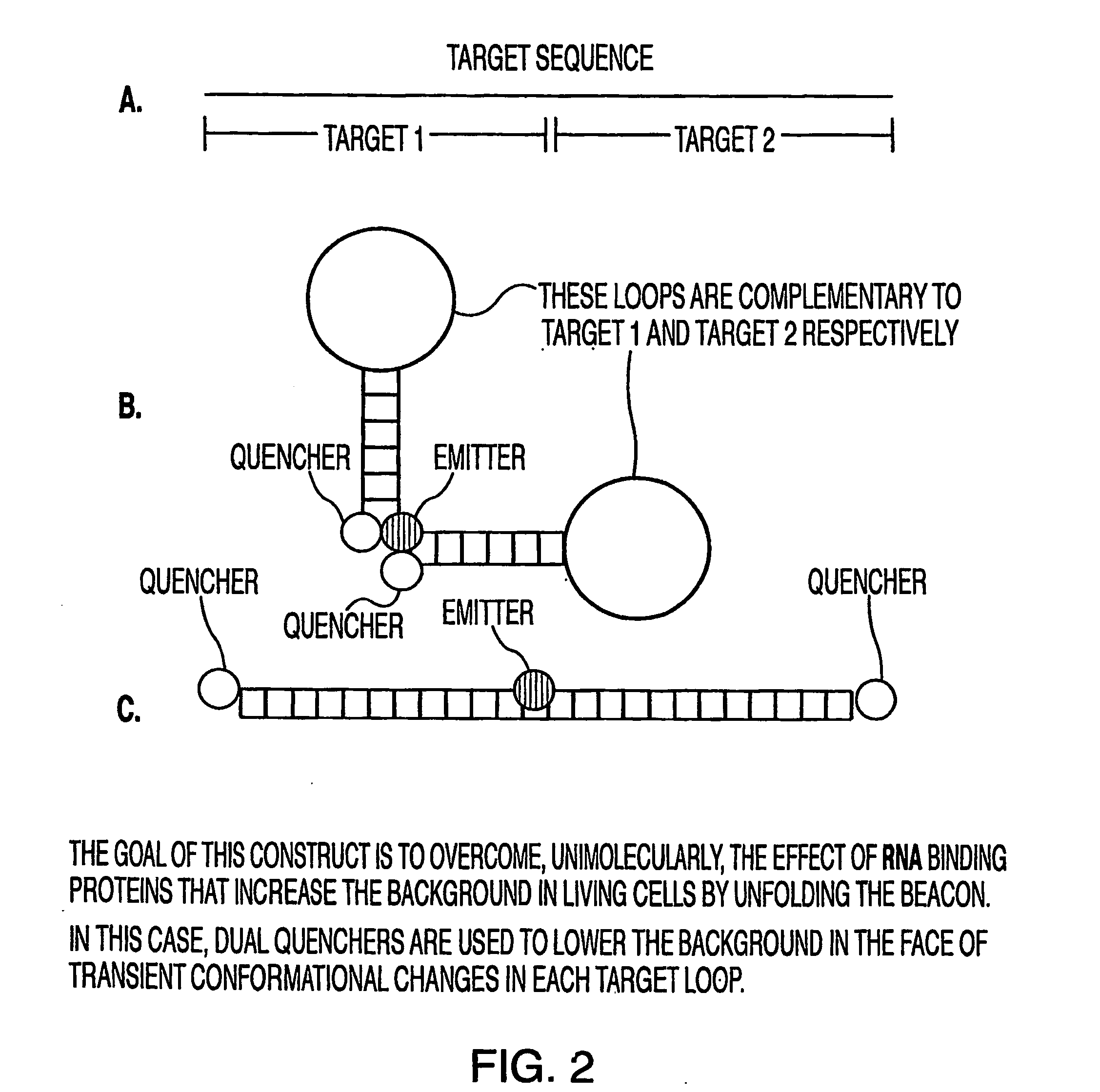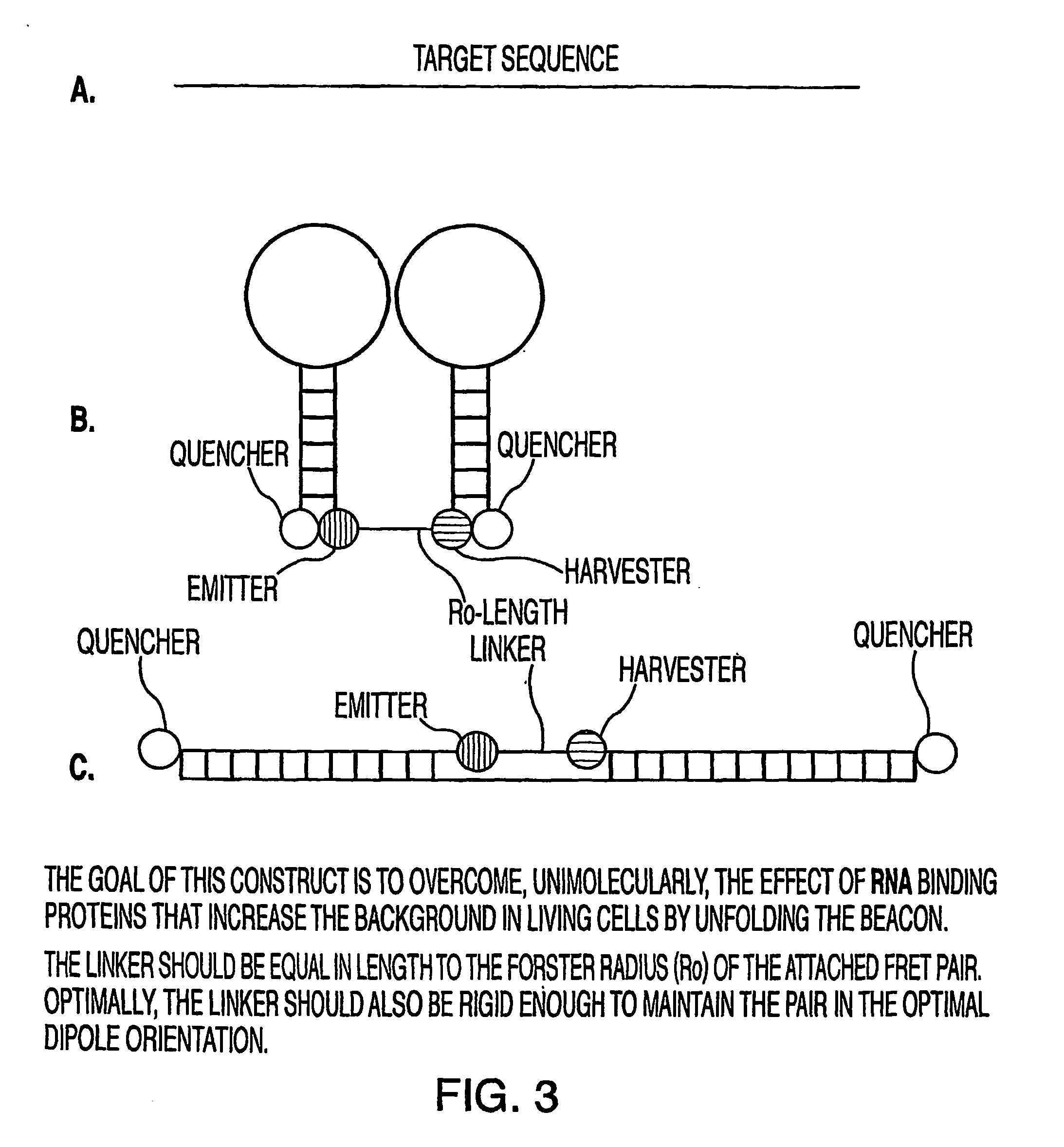Oligonucleotide probes for in vitro, in vivo and intra-cellular detection
a technology of in vitro, in vivo and intracellular detection, applied in the field of oligonucleotide probes, can solve the problems of inability to detect and/or discriminate target versus non-target, limited improvement of sensitivity of non-specific binding of probes, and practical limit of sensitivity of detection techniques
- Summary
- Abstract
- Description
- Claims
- Application Information
AI Technical Summary
Benefits of technology
Problems solved by technology
Method used
Image
Examples
example 1
Transfection Detection
[0141] Described below is a method for detecting Phage Transfection in Mammalian cells. Only 1-3 percent of cells are expected to be successfully transfected via the following transfection procedure. For the procedure to be useful it is necessary to isolate that small percentage of cells without destroying their viability. Prior Methods require the use of phage that has been engineered with a Green Fluorescent Protein (GFP) reporter gene. The method below bypasses this non-trivial process by analyzing the expression of the transfected gene of interest (in this case epidermal growth factor (EGF) rather than relying on a reporter gene.
Materials and Methods
Phage Transfection
[0142] Cell Lines. K562 human leukemia cells were obtained from the American Type Culture Collection. DNA encoding EGF (epidermal growth factor) was inserted in to an M13 phage vector. Phage were purified and banded by PEG precipitation and CsCl ultracentrifugation. The phage were added t...
PUM
| Property | Measurement | Unit |
|---|---|---|
| distance | aaaaa | aaaaa |
| Förster radius | aaaaa | aaaaa |
| Förster distance | aaaaa | aaaaa |
Abstract
Description
Claims
Application Information
 Login to View More
Login to View More - R&D
- Intellectual Property
- Life Sciences
- Materials
- Tech Scout
- Unparalleled Data Quality
- Higher Quality Content
- 60% Fewer Hallucinations
Browse by: Latest US Patents, China's latest patents, Technical Efficacy Thesaurus, Application Domain, Technology Topic, Popular Technical Reports.
© 2025 PatSnap. All rights reserved.Legal|Privacy policy|Modern Slavery Act Transparency Statement|Sitemap|About US| Contact US: help@patsnap.com



